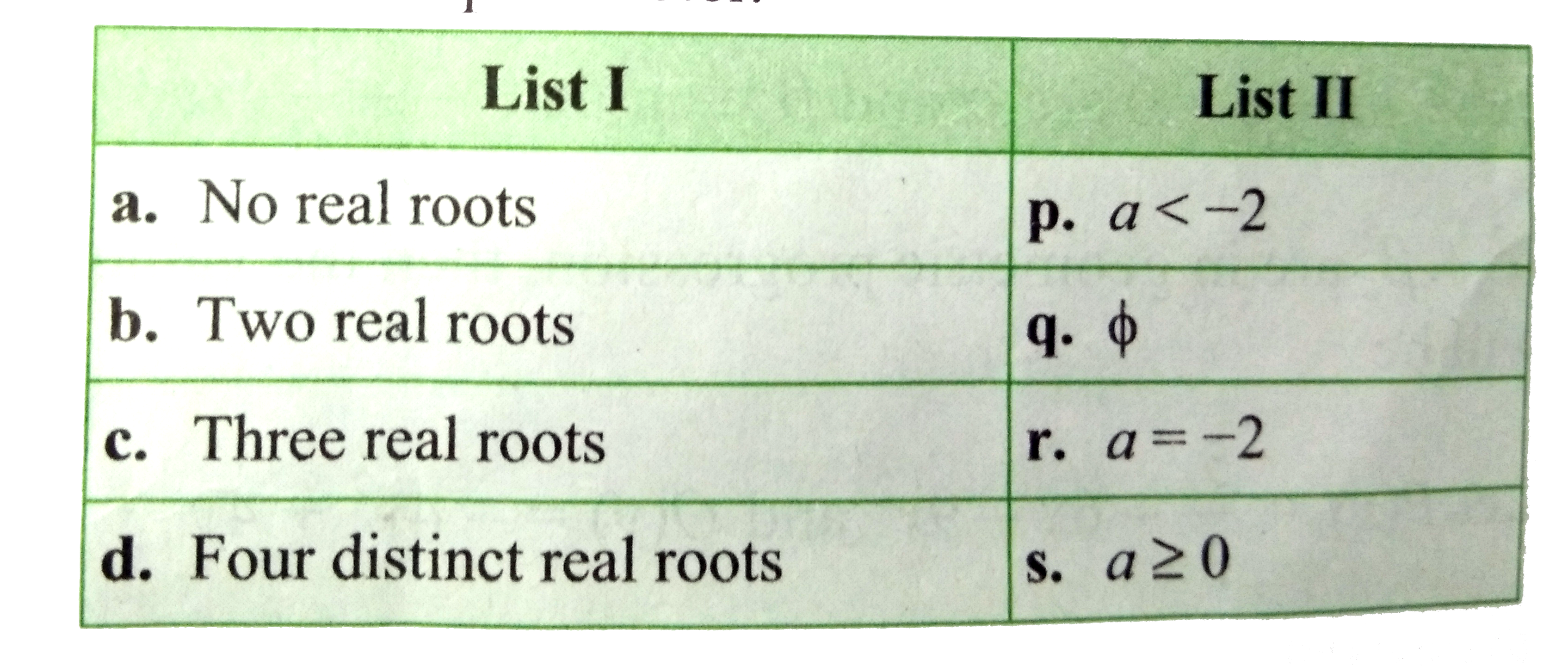(af(μ)<0) is the necessary and sufficient condition for a particular real number μ to lie between the roots of a quadratic equations f(x)=0, where f(x)=ax2+bx+c. Again if f(μ1)f(μ2)<0, then exactly one of the roots will lie between μ1 and μ2.
If c(a+b+c)<0<(a+b+c)a, then Solution in Bengali
one roots is less than 0, the is posititve, the other is negative.
exactly one of the roots lies in (0,1)
both the roots lie in (0,1)
at least one of the roots lies in (0,1)
The correct Answer is:1
af(1)<0andf(0)f(1)>0
⇒af(1)<0andaf(0)<0
Hence, both the numbers 0 and 1 lie between the roots.
Topper's Solved these Questions
- BOOK - CENGAGE PUBLICATIONCHAPTER - THEORY OF EQUATIONSEXERCISE - MATRIX MATCH TYPE6videos
THEORY OF EQUATIONS
- BOOK - CENGAGE PUBLICATIONCHAPTER - THEORY OF EQUATIONSEXERCISE - NUMERICAL VALUE TYPE43videos
THEORY OF EQUATIONS
- BOOK - CENGAGE PUBLICATIONCHAPTER - THEORY OF EQUATIONSEXERCISE - Multiple Correct Answer Type38videos
THEORY OF EQUATIONS
- BOOK - CENGAGE PUBLICATIONCHAPTER - STRAIGHT LINESEXERCISE - ARCHIVES (NUMERICAL VALUE TYPE)1videos
STRAIGHT LINES
- BOOK - CENGAGE PUBLICATIONCHAPTER - THREE DIMENSIONAL GEOMETRYEXERCISE - All Questions291videos
THREE DIMENSIONAL GEOMETRY
Similar Questions
Match the following for the equation x2+a|x|+1=0 where, a is a parameter.
 02:08View Solution
02:08View SolutionIf x=2+22/3+21/3 , then the value of x3−6x2+6x is
05:10View SolutionIf c≠0 and the equation p2x=ax+c+bx−c has two equal roots, then p can be
01:59View SolutionFor a point P in the plane, let d1(P)andd2(P) be the distances of the point P from the lines x−y=0andx+y=0 respectively. The area of the region R consisting of all points P lying in the first quadrant of the plane and satisfying 2≤d1(P)+d2(P)≤4, is
02:01View SolutionFind the angle between the line whose direction cosines are given by l+m+n=0andl2+m2−n2=0.
02:03View SolutionThe necessary and sufficient condition for which a fixed number d' lies between the roots of quadratic equation f(x)=ax^(2)+bx+c=0;(a,b,c in R), is f(d)<0
06:19View SolutionLet f(x)=ax2+bx+c, a≠0, a, b, c∈I. Suppose that f(1)=0, 50<f(7)<60 and 70<f(8)<80.
Number of integral values of x for which f(x)<0 isView SolutionStatement-1: Ifαandβ are real roots of the quadratic equations ax2+bx+c=0and−ax2+bx+c=0, then a2x2+bx+c=0 has a real root between αandβ
Statement-2: If f(x) is a real polynomial and x1,x2∈R such that f(x1)fx2<0, then f(x) = 0 has at leat one real root between x1andx2.06:30View Solution(af(μ)<0) is the necessary and sufficient condition for a particular real number μ to lie between the roots of a quadratic equations f(x)=0, where f(x)=ax2+bx+c. Again if f(μ1)f(μ2)<0, then exactly one of the roots will lie between μ1 and μ2.
If |b|>|a+c|, then03:58View Solution(af(μ)<0) is the necessary and sufficient condition for a particular real number μ to lie between the roots of a quadratic equations f(x)=0, where f(x)=ax2+bx+c. Again if f(μ1)f(μ2)<0, then exactly one of the roots will lie between μ1 and μ2.
If a(a+b+c)<0<(a+b+c)c, then03:29View SolutionIf 0<a<b<cand the roots α,β of the equation ax2+bx+c=0 are imaginary, then
03:01View SolutionSuppose 0<b<candf(x)=x2−bc2x−(b+c),x∈R, then f(x) cannot lie in
View SolutionLet f(x)=ax2+bx+c, a≠0, a, b, c∈I. Suppose that f(1)=0, 50<f(7)<60 and 70<f(8)<80.
Number of integral values of x for which f(x)<0 isView Solution(af(μ)<0) is the necessary and sufficient condition for a particular real number μ to lie between the roots of a quadratic equations f(x)=0, where f(x)=ax2+bx+c. Again if f(μ1)f(μ2)<0, then exactly one of the roots will lie between μ1 and μ2.
If |b|>|a+c|, then02:30View SolutionAn analytic balance has uncertainty in measurement equal to ±1mg. Then report the result in terms of percentage if the weight of a compound is
a. 1g b. 10g c. 100g04:49View Solutionक्या निश्चित संख्या 'd' के लिए समीकरण f(x)=ax2+bx+c=0,(a,b,c,∈R) के मूलों के मध्य स्थित होने के लिए आवश्यक एवं पर्याप्त प्रतिबन्ध f(d)<0 है |
03:26View Solution

